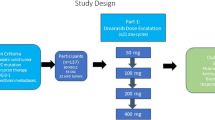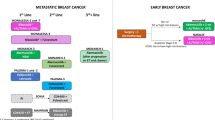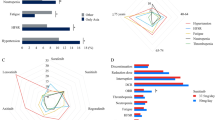Abstract
New anticancer drugs with novel structures including paclitaxel, docetaxel, ilinotecan and gemcitabine have shown significant activity against various solid tumors in phase II trials. Phase II trials of combination regimens containing these drugs are currently in progress. Some combinations such as paclitaxel plus cisplatin in ovarian cancer have shown superiority over the past standard regimen. Not surprisingly, several analogues of these drugs have been developed and currently phase II trials are in progress. ET-743 may has some hope to become the first anticancer drug from a marine product. Oral chemotherapy is useful for treatment of outpatients. A combination regimen of UFT plus oral leucovorin has shown equivalent activity to 5-fluorouracil and leucovorin in advanced colorectal cancer, and capecitabine has shown superior activity and less toxicity than 5-fluorouracil and leucovorin in advanced colorectal cancer. Monoclonal antibody therapy has been successful in patients with breast cancer overexpressing HER2 and in patients with B-cell lymphoma. Currently clinical trials of 17-1A for colorectal cancer and HUM195 for acute myelogeneous leukemia are in progress. Recently presented results of angiogenesis inhibitors are discussed.
Similar content being viewed by others
Abbreviations
- AC:
-
Adriamycin plus cyclophosphamide
- AT:
-
Adriamycin plus taxotere
- CHOP:
-
Cyclophosphamide, adriamycin, vincristine, prednisone
- CPT:
-
Ilinotecan
- T:
-
Taxol
References
Rowinsky EK, Onetto N, Canetta RM,et al: Taxol; The first of the taxens, an important new class of antitumor agents.Semin Oncology 19:646–662, 1992.
Ettinger DS, Finkelstein DM, Sarma RP,et al: Phase II study of paclitaxel in patients with extensive-disease small cell lung cancer; An Eeastern Cooperative Oncology Group Study.J Clin Oncol 13:1430–1435, 1995.
Roth BJ, Dreicer R, Einhorn LH,et al: Significant activity of paclitaxel in advanced transitional-cell carcinoma of the urothelium; A phase II trial of the Eastern Cooperative Oncology Group.J Clin Oncol 12:2264–2270, 1994.
McGuire WP, Blessing JA, Moore D,et al: Paclitaxel has moderate activity in squamous cervix cancer; A Gynecologic Oncology Group Study.J Clin Oncol 14:792–795, 1996.
Cortes JE, Pazdar R: Docetaxel.J Clin Oncol 13:2643–2655, 1995.
Ogawa M: Novel anticancer drugs in Japan.J Cancer Res Clin Oncol 125:134–140, 1999.
Carmichael J, Passinger K, Philip P,et al: Advanced breast cancer; A phase II trial with gemicitabine.J Clin Oncol 13:2731–2736, 1995.
Anderson H, Lund B, Bach F,et al: Single-agent activiy of weekly gemicitabine in advanced non-small-cell lung cancer; A phase II study. IIClin Oncol 12:1821–1826, 1994.
Moore MJ, Tannock IF, Frnst DS,et al: Gemicitabine; A promising new agent in the treatment of advanced urothelial cancer.J Clin Oncol 15:3441–3445, 1997.
Cormier Y, Eisenhauer E, Gregg R,et al: Gemcitabine; An active new agent in patients (PTS) with previously untreated small cell lung cancer; A phase II trial of the NCI Canada Clinical Trials Group (NCIC CTG).Proc Am Soc Clin Oncol 12:330, 1993.
McGuire WP, Hoskins WJ, Brady M,et al: Cyclophosphamide and cisplatin compared with paclitaxel and cisplatin in patients with stage IE and stage IV ovarian cancer.N Engl J Med 334:1–6, 1996.
Nabhaltz JM, Falkson G, Campos D,et al: A phase HI trial comparing doxorubicin (A) and doxcetaxel (T)(AT) to doxorubicin and cyclophosphamide as first line chemotherapy for MBC.Proc Am Soc Clin Oncol 18:127a, 1999.
Henderson IC, Berry D, Demetri G,et al: Improved disease-free (DFS) and overall survival (OS) from the addition of sequential paclitaxel (T) but not from the escalation of doxorubicin (A) dose level in the adjuvant chemotherapy of patients (PTS) with nodepositive primary breast cancer (BC).Proc Am Soc Clin Oncol 17:101a, 1998.
Saltz LB, Locker PK, Pirotta N,et al: Weekly irinotecan (CPT-11), leucovorin (LV), and fluorouracil (FU) is superior to daily × 5LV/FU in patients (PTS) with previously untreated metastatic colorectal cancer (CRC).Proc Am Soc Clin Oncol 18:260a, 1999.
Sessa C, Cuvier C, Caldiera S,et al: A phase I clinical and pharmacokinetic (PK) study of RPR109881A, a new taxoid administered as a 1-hour infusion in patients (PTS) with solid tumors.Proc Am Soc Clin Oncol 18:189a, 1998.
Highley M, Sessa C, Hudhes A,et al: Phase I and pharmacokinetic (PK) study of BMS-184476, a new taxene analog, given weekly in patients with advanced malignancies.Proc Am Soc Clin Oncol 18:168a, 1999.
Hidalgo M, Aylesworth C, Rerrante K,et al: Phase I and pharmacokinetic (PK) study of BMS-184476, a potent and soluble taxene analog, as a 1-hour infusion every 3 weeks.Proc Am Soc Clin Oncol 18:168a, 1999.
Rowinsky E, Johnson T, Geyer C,et al: DX-89515, a hexacyclic camptothecin (CPT) analog on a daily × 5 day schedule; A phase I and pharmacokinetic (PC) study.Proc Am Soc Clin Oncol 18:164a, 1999.
Royce M, Lassere Y, Hoff P,et al: DX-89515, Phase I and pharmacokinetic study of a novel camptothecin analogue administered by 24-hour continuous infusion to patients with advanced solid tumors.Proc Am Soc Clin Oncol 18:177a, 1999.
Cvitkovic E, Riofrio M, Goodwasser F,et al: Final results of a phase I study of Ecteinascidin-743 (ET-743) 24-hour (h) continuous infusion in advanced solid tumors (AST) patients (PTS).Proc Am Soc Clin Oncol 18:180a, 1999.
Ryan DP, Supko JG, Eder JP,et al: A phase I and pharmacokinetic trial of Ecteinascidin-743 (ET-743) administered as a 72-hour continuous infusion.Proc Am Soc Clin Oncol 18:188a, 1999.
Pazdar R, Douillard J-Y, Slillings JR,et al: Multicenter phase HI study of 5-fluorouracil (5-FU) or UFT in combination with leucovorin (LV) in patients with metastatic colorectal cancer.Proc Am Soc Clin Oncol 18:263a, 1999.
Twelves C, Harper P, Vun Cutsen E,et al: A phase III trial (SO1496) of Xeloda (Capecitabine) in previously untreated advanced/metastatic colorectal cancer.Proc Am Soc Clin Oncol 18:263a, 1999.
Cobleigh MA, Vogel CL, Tripathy D,et al: Efficacy and safety of Herceptin (humarized anti-HER2 antibody) as a single agent in 222 women with HER2 overexpression who relapsed following chemotherapy for metastatic breast cancer.Proc Am Soc Clin Oncol 17:97a, 1998.
Slamon D, Leyland-Jones B, Shak S,et al: Addition of herceptin (humanized anti-HER2 antibody) to first line chemotherapy for HER2 overexpressing metastatic breast cancer (HER2 + /MBC) markedly increases anticancer activity; A randomized multinational controlled phase HI trial.Proc Am Soc Clin Oncol 16:98a, 1998.
Norton L, Slamon D, Leyland-Jones B,et al: Overall survival (OS) advantage to simultaneous chemotherapy (CR+) plus the humanized anti-HER2 monoclonal antibody herceptin (H) in HER2-over-expressing (HER2 + ) metastatic breast cancer (MBC).Proc Am Soc Clin Oncol 18:127a, 1999.
Maloney DG, Grillo-Lopez J, Whie CA,et al: IDEC-C2B8 (Rituximab) anti-CD20 monoclonal antibody therapy in patients with relapsed low-grade non-Hodgkin’s lymphoma.Blood 90:2188–2195, 1997.
Piro LD, White CA, Grillo-Lopez AJ,et al: Extended rituximab (anti-CD20 monoclonal antibody) therapy for relapsed or refractory low grade or follicular non-Hodgkin lymphoma.Ann Oncol 10:655–661, 1999.
Czuczman MS, Grillo-Lopez AJ, White CA,et al: Treatment of patients with low-grade B-cell lymphoma with the combination of chimeric anti-CD20 monoclonal antibody and CHOP chemotherapy.J Clin Oncol 17:268–276, 1999.
Reithmuller G, Holtz E, Schlimak G,et al: Monoclonal antibody therapy for resected Dukes’C colorectal cancer; Seven-year outcome at a multicenter randomized trial.J Clin Oncol 16:1788–1794, 1998.
Caron PC, Dumont L, Scheinberg DA: Supersaturating infusional humanized anti-CD33 monoclonal antibody HUM 195 in myelogenous leukemia.Clin Cancer Res 4:1421–1428, 1998.
Feldman E, Kalaycio M, Schulman P,et al: Humanized monoclonal anti-CD33 antibody HUM 195 in the treatment of relapsed/refractory acute myelogenous leukemia (AML); Preliminary report of a phase II study.Proc Am Soc Clin Oncol 18:4a, 1999.
Rosen L, Mulay M, Mayers A,et al: Phase I doseescalating trial of SU5416, a novel angiogenesis inhibitor in patients with advanced malignancies.Proc Am Soc Clin Oncol 18:161a, 1999.
Cropp G, Rosen L, Mulay M,et al: Pharmacokinetics and pharmacodynamics of SU5416 in a phase I, dose escalating trial in patients with advanced malignancies.Proc Am Soc Clin Oncol 18:161a, 1999.
de Vries EGE, Groen HJM, Wynendaele W,et al: PMU-145156E—a novel angiogenesis inhibitor—in patients with solid tumors; An update of a phase I and pharmacokinetic study.Proc Am Soc Clin Oncol 18:161a, 1999.
Patnaik A, Rowinsky E, Harmond L,et al: A phase I and pharmacokinetic (PK) study of the unique angiogenesis inhibitor, squalamine lactate (MSI-1256E).Proc Am Soc Clin Oncol 18:162a, 1999.
Trocky N, Narshall J, Rizvi N,et al: A phase I safety, tolerance and pharmacokinetic study of rising dose, rising duration continuous infusion of MSI-1256F (squalamine lactate) in patients with advanced cancer.Proc Am Soc Clin Oncol 18:162a, 1999.
Goel R, Hirte H, Major P,et al: Clinical pharmacology of the metalloproteinase (MMP) and angiogenesis inhibitor Bayer 12-9566 in cancer patients.Proc Am Soc Clin Oncol 18:160a, 1999.
Tolcher A, Rowinsky E, Rizzo Z,et al: Phase I and pharmacokinetic study of the oral matrix metalloproteinase inhibitor Bay 12-9566 in combination with paclitaxel and carboplatin.Proc Am Soc Clin Oncol 18:160a, 1999.
D’Olimpio J, Hande K, Collier M,et al: Phase I study of the matrix metalloproteinase inhibitor AG3340 in combination with paclitaxel and carboplatin for the treatment of patients with advanced solid tumors.Proc Am Soc Clin Oncol 18:160a, 1999.
Jones PH, Elliot M, Dobbs N,et al: Phase I / II study of combination angiogenesis therapy with marimastat, captopril and fragmin.Proc Am Soc Clin Oncol 18:447a, 1999.
Rosemurgy A, Buckels J, Charnley R,et al: A randomized study comparing marimastat to gemcitabine as first line therapy in patients with non-resectable pancreatic cancer.Proc Am Soc Clin Oncol 18:261a, 1999.
Author information
Authors and Affiliations
About this article
Cite this article
Ogawa, M. Current status and perspectives in cancer chemotherapy. Breast Cancer 6, 270–274 (1999). https://doi.org/10.1007/BF02966438
Issue Date:
DOI: https://doi.org/10.1007/BF02966438




